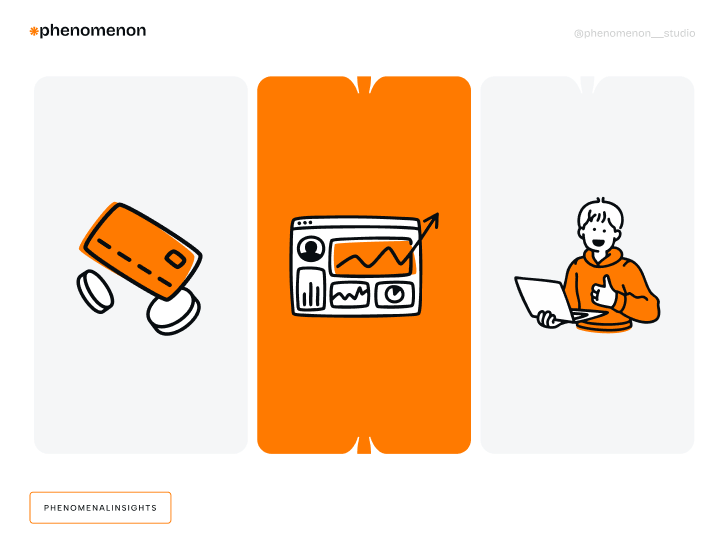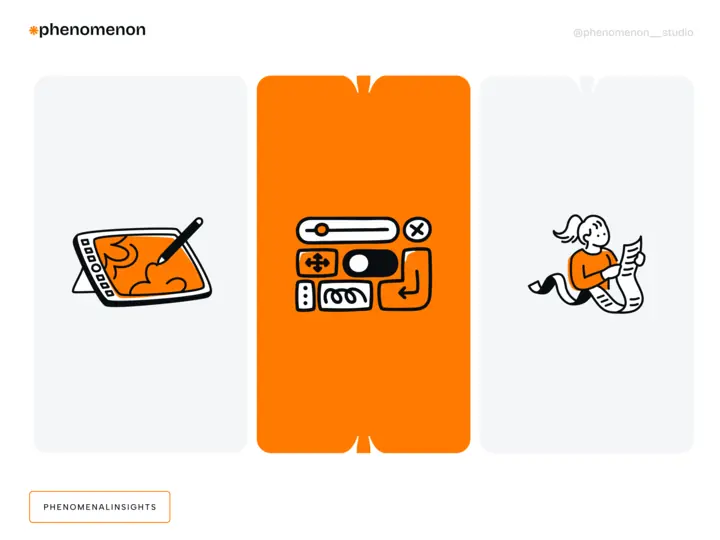Data is king in the constantly changing world of mobile applications. It gives valuable insights, uncovers hidden patterns, and facilitates making decisions that can improve your app’s success, particularly in monetization. This article describes a few data-driven tactics that optimize app monetization.
In the ever-evolving world of mobile applications, data is like royalty. It offers valuable insights, unveils hidden patterns, and plays a key role in decision-making, ultimately boosting your app’s success, particularly in terms of monetization. Yet, wading through the sea of data can be a daunting task.
The global mobile app market is projected to reach $407.31 billion by 2026, indicating the indispensable role of useful apps in modern life. Today, people depend on mobile apps for seamless task completion on the go and for entertainment during leisure moments. Businesses need to grasp the intricacies of app monetization to generate revenue, witness ROI, secure a robust market position, enhance user engagement and retention, and diversify revenue streams. Yet, optimizing app monetization remains unattainable without leveraging data analytics effectively. Hence, developers and app publishers must master the art of maximizing the potential of data analytics.
This article details data-driven tactics for effective app monetization, aiding developers and publishers in mastering data usage.
App Monetization Models
App monetization takes various forms, catering to diverse user preferences and business strategies. Some apps adopt the paid model, requiring users to make a one-time payment for app access. Others follow the freemium approach, offering free downloads with optional in-app purchases or premium upgrades. In-app purchases allow users to buy virtual goods or unlock additional features. Subscription-based models involve users paying regular fees for exclusive content or services. Advertising generates revenue by displaying ads within the app. Affiliate marketing earns commissions through third-party promotions. Sponsorships, licensing, and data monetization contribute to the multifaceted landscape of app monetization. These options provide developers and businesses with various avenues to sustain their endeavors.
Read also: Navigating the Website Redesign Cost Maze for Optimal Results
Key Metrics in App Monetization
- Conversion Rate. Measures the percentage of users who take a desired action, such as making an in-app purchase or subscribing.
- Average Revenue Per User (ARPU). Calculates the average revenue generated by each user, providing insights into the app’s overall monetization efficiency.
- Cost Per Acquisition (CPA). Assesses the cost incurred to acquire a new user, helping gauge the effectiveness of marketing efforts.
- Retention Rate. Reflects the percentage of users who continue using the app over time, indicating user satisfaction and loyalty.
- Lifetime Value (LTV). Predicts the total revenue a user is expected to generate during their entire engagement with the app, aiding in budgeting and user acquisition strategies.
- Churn Rate. Measures the rate at which users stop using the app, identifying areas for improvement in user experience or monetization strategies.
- Average Revenue Per Paying User (ARPPU). Analyzes the average revenue generated by users who make in-app purchases, providing insights into the spending behavior of paying customers.
- Ad Click-Through Rate (CTR). Evaluates the percentage of users who click on displayed ads, influencing advertising strategies and revenue from ad-based monetization.
- Fill Rate. Represents the percentage of ad requests that are successfully filled with ads, impacting the overall effectiveness of ad monetization.
- Session Length. Measures the average time users spend within the app during a single session, influencing engagement and potential for monetization opportunities.
- Cost Per Mille (CPM). Indicates the cost per thousand impressions for ads, providing insights into ad revenue potential and the app’s advertising performance.
- Click-Through Conversion Rate (CTCR). Measures the percentage of users who click on an ad and subsequently perform a desired action, such as making a purchase.
- ARPU by Channel. Breaks down ARPU based on different user acquisition channels, helping identify the most effective channels for user monetization.
- Earnings Before Interest, Taxes, Depreciation, and Amortization (EBITDA). Evaluates the app’s profitability by considering its operational performance without accounting for non-operational expenses.
Implementing Data Analytics Tools
Implementing data analytics tools is a critical process for extracting valuable insights and optimizing app performance. To begin, it’s essential to define the objectives guiding your analytics strategy. These objectives range from understanding user behavior to improving monetization strategies. Once you’ve established your goals, the next step is to choose analytics tools that align with these objectives. Consider factors such as features, ease of integration, and cost to make an informed decision.
After selecting an analytics tool, integrate its Software Development Kit (SDK) into your app. The SDK facilitates data collection and transmission to the analytics platform’s servers. Thoroughly test the implementation before deploying the app to ensure accurate data collection. Verify that events, goals, and tracking mechanisms function as intended to prevent issues later on.
Configure user tracking in analytics tools to capture pertinent information such as user demographics, devices, and locations. For apps with e-commerce transactions, activate e-commerce tracking to monitor user purchases and revenue. Explore enhanced e-commerce tracking implementation for apps with intricate sales funnels.
Privacy compliance is paramount in the implementation process. Ensure that your data collection practices align with privacy regulations, implementing user consent mechanisms where necessary. Communicate with users about the data you collect and how it will be used to establish transparency and trust.
Continuous monitoring and optimization are integral to the success of your analytics strategy. Analyze data insights and make adjustments based on the information provided by the analytics tools. This iterative process allows for ongoing improvements to your app, marketing strategies, and monetization models.
Ensuring that teams understand how to interpret and leverage analytics data is crucial. This encompasses developers, product managers, marketers, and decision-makers who use insights for strategic decision-making. A comprehensive approach to implementing data analytics guarantees that your app maximizes its potential for sustained success.

Popular Tools on the Market
Selecting the ideal analytics solution for your app is essential, just as any orchestra needs the appropriate instruments. Without these solutions, you won’t be able to understand your user and their behavior truly. Everything, from in-app behavior to user retention rates, is crucial for the success of your app. Well-known choices such as AppsFlyer, Firebase, and Google Analytics provide a variety of functionalities, each meeting a particular need. Below, we’ll talk about each of these in more detail.
Google Analytics:
This market leader thoroughly analyzes user behavior, website traffic, and campaign effectiveness. Consider monitoring the download of apps, the duration of sessions, and the user’s path through various platforms.
Key metrics:
- Users
- Sessions
- The fate of involvement
- Average engagement time
- Views
- Event Count
- Conversions
- Total Revenue
Firebase:
Robust analytics capabilities connected with other Firebase services are available through Google’s in-house mobile app development platform. Consider features for A/B testing, crash reporting, and user engagement metrics.
Key metrics:
- Reads/Writes
- Data Transfer
- Sign-ups/Sign-ins
- Failed Sign-ins
- Execution Time
- Invocation Count
- Stored Data
- Data Transfer
- Crash-free Users
- Crashes Per Session
- Response Time
- Active Users
- User Engagement
AppsFlyer:
This dominant force in attribution monitoring tracks new users through various channels. Consider monitoring campaign return on investment, identifying the most effective channels, and optimizing your marketing budget for maximum impact.
Key metrics:
- User Acquisition
- Retargeting
- Total revenue
- Costs
- Non-organic/Organic installations
- Total settings
- eCPI
- Non-organic/Organic revenue
- Clicks
- Impressions
- Re-engagement and Re-attribution
- Total touchpoints
- SKAN installs and revenue
Data Visualization
Data fuels the success of your app, but seeing just statistics can be intimidating and uninteresting. Enter the world of data visualization, where figures are shown as dashboards, graphs, and charts highlighting hidden patterns and trends.
- Dashboards: A dashboard provides a clear image of the state of your app by displaying conversion rates, ARPU, and user acquisition statistics in real time.
- Interactive charts: Use interactive bar graphs to investigate user behavior and determine which features are most and least used.
- Line graphs: Your marketing and notification initiatives will benefit from the elegantly displayed user interaction patterns highlighting peak hours and seasonal trends.
Segmentation and Targeting
After identifying your user segments, it’s time to design tailored experiences that meet their particular preferences:
- Targeted Content & Suggestions: Say goodbye to general advice! To recommend pertinent features, content, or in-app purchases, analyze user behavior, and segment preferences. Consider recommending exercises based on your fitness objectives or articles based on your reading preferences.
- Personalized Offers & Notifications: Avoid spamming users with pointless alerts. Utilize segments to convey messages that are specifically targeted and resonant, such as reminding power users of their preferred features or giving high-value clients access to unique deals.
- A/B testing and dynamic pricing: What works for one market segment may not work for another. To identify the sweet spot for maximum revenue, experiment with various price models, subscription choices, and in-app purchase opportunities for each segment.

How Does Data Help Us?
Discover User Portrait
Data analysis is about understanding people, not just numbers. We can create a clear image of our perfect client by examining user demographics, hobbies, and behavior patterns. This consists of:
- Demographics: These provide a general idea of the people we are targeting, including age, gender, geography, and economic level. Imagine a fitness tracking application. Data may indicate that our ideal user is more likely to be younger, tech-savvy, and health-conscious.
- Interests: What motivates this user? Data analysis can provide insight into their interests, pastimes, and internet habits. Travel lovers and lifetime learners may find a sweet spot for a language-learning app.
- Acquisition Channels: What websites are frequented by our ideal customers? Using data analysis, one may determine the best ways to contact people through social networks, search engines, or app stores.
Increase Engagement & Retention
Imagine a crystal ball that reflects your users’ actions inside your application. You can get it just by using data analysis, which reveals their behavior patterns, the length of their sessions, and even the triggers that make them walk out the door.
- Behavior Patterns: You may be the owner of a fitness app. Do your consumers like to work out first thing in the morning or browse late at night? Do they like extended periods of activity or brief spurts of exercise? Data analysis provides a clear view of their online behaviors, enabling you to adjust the cadence of your app.
- Length of Session: How long do users spend on a page before clicking “Exit”? Session length analysis identifies possible friction points in your application’s flow. Do people find themselves disoriented in menus? Is the information interesting enough to keep their interest?
- Churn Triggers: What triggers cause users to leave permanently? These warning signs, such as unclear onboarding procedures, pointless messages, or malfunctioning functionality, are found through data analysis.
Monetization Mix
Visualize gaining access to your users’ wallets. Data analysis lets you learn about their preferences for in-app purchases, subscriptions, and even preferred ad formats.
- In-App Purchases: Do your users tend to be frugal or impulsive consumers? Data analysis reveals the kinds of in-app purchases users will likely make, including those for virtual items, power-ups, and extra features. Consider using data to inform choices about pricing structures, alternatives for bundling, and even when to send out buy prompts.
- Subscriptions: Do your users want the flexibility of one-time purchases or the stability of a monthly subscription? Their subscription preferences are revealed by data analysis, which enables you to adjust your services and price structures appropriately. Consider experimenting with freemium models with premium upgrades or offering tier-based memberships with different perks.
- Formats for Advertising: Not every advertisement is made equal. Which ad forms, whether native advertisements that blend in seamlessly with your app’s content, interstitial ads that draw attention in between sessions, or rewarded video commercials that give users something in exchange for their time, are most effective with your audience can be determined through data research.
Beyond the Numbers
- Privacy and Security: Put user privacy and data security first by following rules and putting strong security measures in place. In today’s data-driven society, transparency and trust are essential.
- Actionable Insights: Data analysis aims to produce actionable insights rather than just numbers. Convert research results into practical user acquisition, engagement, and revenue-generating initiatives.
- Constant Learning: Adopt a mindset where decisions are made based on evidence. Continue to collect and evaluate data, modify your plans in light of fresh revelations, and never stop picking up knowledge from your users.
- AI Incorporated: Consider integrating AI and machine learning into your data analysis for even more potent insights and predictive capabilities.
Challenges in App Monetization through Data Analytics
1. Data Privacy Concerns:
Monetizing apps through data analytics requires balancing valuable insights and respecting user privacy. To overcome this challenge, you need to prioritize transparent communication about data collection practices, implement robust security measures, and adhere to data protection regulations. Obtaining explicit user consent is crucial, and offering clear options for users to control their data settings fosters trust.
2. User Consent and Trust:
Gaining user consent for data collection is challenging but essential. To overcome this hurdle, developers should implement user-friendly consent mechanisms within the app, clearly explaining how collected data will be used. Consistent and transparent communication about data practices builds and maintains user trust. Offering users control over their privacy settings and providing options to opt out of certain data collection activities enhances their sense of agency.
3. Integration Complexity:
The integration of data analytics tools into an app can be complex and potentially disrupt the user experience. Thorough testing and careful implementation are essential to overcome this challenge. Developers should follow the documentation provided by analytics tools, conduct extensive testing before deployment, and continuously monitor for any issues or disruptions.
4. Data Accuracy and Quality:
Ensuring the accuracy and quality of data is critical for meaningful insights. To overcome challenges related to data accuracy, developers must implement data validation checks, regularly audit and clean datasets, and employ methods to identify and rectify any biases. Investing in data quality assurance processes and tools is vital to maintain the integrity of analytics insights.
5. Adapting to Changing Regulations:
Staying abreast of evolving data protection regulations requires ongoing effort. This is why a compliance framework is a must, as well as regular reviews and updates of data practices. A proactive approach to compliance ensures that the app’s analytics practices remain in line with regulatory requirements.
6. Balancing Monetization and User Experience:
Achieving a balance between monetization and a positive user experience is a common challenge. To overcome this, developers should prioritize user-friendly monetization strategies, minimize intrusive ads, and leverage user feedback to refine their approach. Offering users a choice in how they interact with ads, such as providing opt-in options for certain promotions, can help strike a balance.
7. Understanding Diverse User Behavior:
The diversity of user behavior requires personalized monetization strategies. Overcoming this challenge involves leveraging advanced analytics tools that allow for better user segmentation. Conducting thorough market research and seeking user feedback contribute to a deeper understanding of user needs.
8. Ad Blockers and Ad Fatigue:
The prevalence of ad blockers and user fatigue with ads necessitates creative approaches. This is why developers should explore alternative monetization methods, such as native or incentivized ads. Ensuring that ads are relevant, non-intrusive, and provide value to users helps combat ad fatigue and encourages user engagement.
9. Competitive Landscape:
In a highly competitive app market, standing out requires a strategic approach. Developers should conduct thorough market analysis, identify unique selling points, and continuously innovate. Adapting monetization strategies based on competitor analysis and staying agile in response to market trends ensures a competitive edge.
10. Technical Challenges:
Addressing technical challenges involves employing scalable and efficient solutions. Developers should optimize data storage and processing, invest in infrastructure that can handle large volumes of data, and stay abreast of technological advancements. Regularly updating analytics tools and platforms helps overcome technical bottlenecks.
11. Educating Teams:
Ensuring that teams are well-versed in interpreting and leveraging analytics data is crucial. Overcoming this challenge requires ongoing training programs, workshops, and resources. Developers, marketers, and decision-makers should collaborate to share insights and contribute to informed decision-making. Regular training sessions and access to educational materials keep teams informed and proficient.
Conclusion
Data-driven app monetization is a continuous process. It requires exploring and optimizing rather than fixing everything once. By going deeply into your data, you can solve the mysteries of user behavior and create a long-lasting app business. The deeper you dive into data analysis, the more effectively you will use your investment. Data is the key to the effective development of your application. Thus, put on your data goggles, dive in, and begin optimizing the revenue potential of your app!













